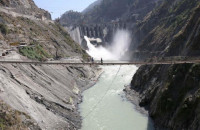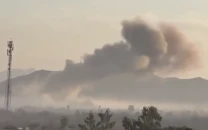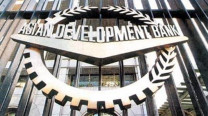Fire prevention and life safety: CDA to impose fines on violators after July 26
Fines up to Rs500,000 to be levied by Disaster Management Directorate.

The Capital Development Authority (CDA) will take strict action against violators of building standards and impose fine up to Rs500,000 after July 26, to ensure safety of lives and infrastructure.
CDA Chairperson Imtiaz Inayat Elahi said the authority will use its powers to vacate or seal any building or impose fine on violators of “Building Standards for Fire Prevention and Life Safety 2010” after July 26. He said that CDA is the first municipality to introduce and implement such standards in the federal capital.
The authority has formally issued notifications pertaining to these standards to prevent and mitigate effects of disasters and emergencies, especially in case of fire. In the first phase, the Directorate of Building Control Service of CDA notified these standards to owners of buildings under category-II, III and IV.
Category-II includes two-storey buildings, industries and all other non-residential buildings, except farmhouses; category-III includes non-residential buildings up to five stories (including ground floor); category-IV includes all high-rise buildings that are six-stories and above (including ground floor).
The standards have been printed in the Official Gazette of Pakistan and all existing buildings constructed before the promulgation of the standards are legally obligated to take measures and install all required equipments within six months. The CDA Disaster Management Directorate is conducting surveys both in public and private buildings to check fire safety arrangements in these buildings.
After completion of the inspection of a building or premises, CDA will issue a notice to the owner or occupier directing him to undertake measures as may be specified in the notice. However, in case of construction of new buildings, clearance in regard to fire prevention and life safety measures shall be required from the Directorate of Emergency and Disaster Management, both at the time of approval of building plan as well as issuance of completion certificate by the authority.
Elahi said, “Being the sole civic agency of the capital territory, it is responsible for protecting the lives and properties of the inhabitants in wake of natural or man-made disasters.”
Islamabad has faced a number of major fire incidents in the past in which many people lost their lives as well as properties worth millions of rupees, he said. The existence of such standards was desperately felt during the fire at Shaheed-i-Mould Secretariat in January 2002, fires in the parliament building in 1989, 2002 and 2007 and the bomb blast and fire at Marriott Hotel in September 2008, he added.
CDA’s building standards
The building standards under “Building Standards for Fire Prevention and Life Safety 2010” have been divided into three clauses:
1. Fire prevention
This covers the aspects pertaining to design and construction of buildings on passive fire protection measures, describing various types of building material and their fire safety rating.
2. Life safety
This provision deals with events of fire and similar emergencies, addressing construction and occupancy features that are necessary to minimize danger to life from fire, smoke, fumes or panic.
3. Fire protection
This aspect is related to appurtenance, their related components and guidelines for selecting correct types of equipment and installations meant for fire protection of buildings depending on their classifications and types
Published in The Express Tribune, July 8th, 2011.


















COMMENTS
Comments are moderated and generally will be posted if they are on-topic and not abusive.
For more information, please see our Comments FAQ